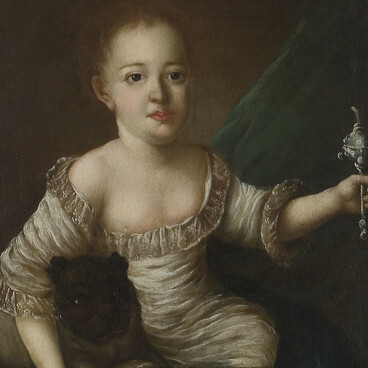The museum houses a unique exhibit — a bust of Emperor Alexander I, made at the Imperial Porcelain Factory. It was awarded a gold stamp, indicating that it was an exemplary sculpture that should be used as a reference. Its perfect, elegant shape and large size speak to the great skills of Russian sculptors. The bust is based on the model of Louis-Marie Guichard.
Louis-Marie Guichard was a French sculptor and academician of the Saint Petersburg Academy of Arts. He studied under the sculptor Augustin Pajou and the artist François-André Vincent. In 1802, he was invited to Russia to create a portrait bust of the emperor. The original commissioned portrait is now kept in the Tretyakov Gallery. It was made of bronze in 1804. Guichard subsequently remade it in marble.
While working in St. Petersburg, Guichard created portraits of statesmen, prominent generals, and court nobility: Alexander Beloselsky-Belozersky, Oberhofmarschall Alexander Naryshkin, the architect Andrey Voronikhin, the outstanding maritime explorers Ivan Kruzenshtern and Yuri Lisyansky, as well as a portrait of Generalissimo Alexander Suvorov.
In 1806, Louis-Marie Guichard was commissioned to create portraits of Emperor Alexander I and his family. These works are now housed in the Russian Museum and the Hermitage.
Louis-Marie Guichard was not only an amazing portraitist, but also was perfectly able to convey the individuality of the sitter. In the portrait, Alexander is dressed according to the fashion of those times. The image seems to capture two side of one whole: severity and authority in the eyes and the desire to please and softness in his half-smile.
Mikhail Speransky is credited with saying this phrase about Alexander I: “You know the suspicious nature of the sovereign. Everything he does, he does it by halves. He is too weak to control and too strong to be controlled.”
Alexander Pushkin wrote these lines while examining the bust of Emperor Alexander I by another sculptor:
Louis-Marie Guichard was a French sculptor and academician of the Saint Petersburg Academy of Arts. He studied under the sculptor Augustin Pajou and the artist François-André Vincent. In 1802, he was invited to Russia to create a portrait bust of the emperor. The original commissioned portrait is now kept in the Tretyakov Gallery. It was made of bronze in 1804. Guichard subsequently remade it in marble.
While working in St. Petersburg, Guichard created portraits of statesmen, prominent generals, and court nobility: Alexander Beloselsky-Belozersky, Oberhofmarschall Alexander Naryshkin, the architect Andrey Voronikhin, the outstanding maritime explorers Ivan Kruzenshtern and Yuri Lisyansky, as well as a portrait of Generalissimo Alexander Suvorov.
In 1806, Louis-Marie Guichard was commissioned to create portraits of Emperor Alexander I and his family. These works are now housed in the Russian Museum and the Hermitage.
Louis-Marie Guichard was not only an amazing portraitist, but also was perfectly able to convey the individuality of the sitter. In the portrait, Alexander is dressed according to the fashion of those times. The image seems to capture two side of one whole: severity and authority in the eyes and the desire to please and softness in his half-smile.
Mikhail Speransky is credited with saying this phrase about Alexander I: “You know the suspicious nature of the sovereign. Everything he does, he does it by halves. He is too weak to control and too strong to be controlled.”
Alexander Pushkin wrote these lines while examining the bust of Emperor Alexander I by another sculptor:




